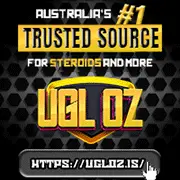jimbosmith316
MuscleChemistry
Effect of locally delivered IGF‐1 on nerve regeneration during aging: An experimental study in rats, PJ Apel, Muscle & Nerve Volume 41, Issue 3, pages 335–341, March 2010
Given the wide-ranging effects of IGF-1 on nerve regeneration and the known decline in IGF- 1 with age, we sought to determine whether IGF-1 replacement would improve nerve regeneration in aged animals. Previously, we found that increasing systemic IGF-1 via pulsatile growth hormone injection did not improve nerve regeneration (unpublished data).Thus, the purpose of this study was to examine the effects of IGF-1 locally delivered to a nerve transection site in aged rats, and to evaluate neuromuscular recovery, axonal regeneration, myelination, Schwann cell activity, and the resulting changes at the NMJ.
Here's how they delivered it... it wasn't cell made IGF-1 but administered IGF-1 near site continuously.
Discussion
In this study we sought to determine whether IGF-1 would improve neuromuscular recovery after nerve injury during aging. <mark>We found that IGF-1 improved nerve regeneration by acting on the axons and Schwann cells, and secondarily on the NMJs. These results suggest that there is no loss of sensitivity to IGF-1 with age and that IGF-1 can improve regeneration after nerve injury during aging.</mark>
Previous studies have examined the effect of systemically administered IGF-1 during neuromuscular recovery in neonatal rats. Vergani et al. found that systemic IGF-1 promoted neuronal survival following crush injury and improved muscle reinnervation.34 Kanje et al. found that locally delivered IGF-1 following crush injury in juveniles led to improved sensory function.35 Tiancgo et al. found that IGF-1 locally delivered to an end-to-side repair improved muscle function in young rats.36
To the authors’ knowledge, the current study is the first to examine the effect of IGF-1 during nerve regeneration in aged animals. Axonal outgrowth is central to nerve regeneration, and IGF-1 is a well-documented promoter of motor neuron survival,37 axonal growth,38 and axonal branching.18 In the regenerating nerve, IGF-1 is a key promoter of initial sprouting and subsequent elongation of axons39 (for review, see Rabinovsky2). Although there has been extensive investigation of the effect of IGF-1 on neuron outgrowth and survival, nearly all of the studies were performed in vitro or in embryonic animals. Thus, it is not known how increased age affects the neuronal response to IGF-1. In this study we found that, for metrics of neuronal trophism, aged animals had a robust response to IGF-1 treatment, increasing axonal number, diameter, and density in the regenerated nerve segment. Thus, the neuronal response to IGF-1 of the regenerating axon does not appear to be limited due to age. The Schwann cell is a key factor in promotion of nerve regeneration. The effect of IGF-1 on Schwann cells has also been studied. IGF-1 is known to promote Schwann cell survival,40 motility,41 proliferation, 42 and myelination.43 However, the physiology of Schwann cells from aged animals is largely unknown. This study has addressed some of the parameters of Schwann cell function in vivo, particularly myelination and GAP43 expression. GAP43 is upregulated in nearly all myelinating Schwann cells of the distal stump following axotomy.31 Expression of GAP43 is postulated to play a role in the interaction between the regenerating axon and Schwann cell.30 In this study, we found that GAP43 expression was significantly upregulated in both young and aged animals with IGF-1 treatment. In addition, GAP43 expression was higher in aged animals treated with IGF-1 than in similarly treated young animals, suggesting that age increases sensitivity to IGF-1 for this aspect of Schwann cell function. However, due to pooling of the whole muscle mRNA, in this study we could differentiate between an increase in Schwann cell number and an increase in activity. Furthermore, because the sample was from muscle, the increase in GAP43 expression was due to intramuscular neurons, terminal Schwann cells, or both. GAP43 expression in the regenerated segment itself was not assayed. In addition to GAP43 activity, IGF-1 increased myelination in the regenerated nerve, independent of the increase in axon diameter. Thus, at the Schwann cell level, age does not impair the response to IGF-1 and results in an increased regenerative response.
Failure to achieve reinnervation of the muscle is thought to contribute to impaired neuromuscular recovery after nerve injury.44 In this study we found by histologic examination that the motor endplate regained an innervated, pre-injury morphology in all but the aged saline group. This failure to reinnervate may have been due to delayed nerve regeneration or instability of the postsynaptic NMJ, both of which have been shown to occur with aging.9 In this study, treatment with IGF-1 may have accelerated axonal regeneration, leading to earlier reinnervation of the muscle, and thus preservational of the postsynaptic NMJ. One limitation of our study is the lack of functional and electrical assessments. Functional recovery is the gold standard for clinical outcomes in human subjects, but, historically, functional recovery in rodent models has been difficult to assess.45 In rats, there is a poor correlation between functional, electrophysiologic, and histologic outcomes. 46 In this study, electrical measures of function were performed and showed a trend toward improvement with IGF-1 treatment, but this was not statistically significant (data not shown). Nonetheless, we were able to demonstrate that IGF-1 improved nerve regeneration in aged animals. An important strength of our study is the in vivo comparison between young adult and aged rats after a complete nerve transection. Previous studies of IGF-1 on nerve regeneration utilized in vitro, neonatal, or juvenile animal models. In addition, many previous studies utilized crush injury models. Crush injuries in rodents typically have a near 100% rate of recovery and do not accurately model clinical scenarios wherein neuromuscular recovery is often very poor. Although previous studies have helped to answer many questions about the effects of IGF-1, this study is the first to examine in vivo the effects of age and IGF-1 on neuromuscular recovery following nerve transection.
Overall, our study has provided substantial evidence that locally delivered IGF-1 improves neuromuscular recovery after nerve injury in aged animals. We showed that, when local IGF-1 levels were equally supplemented in young and aged animals, nerve regeneration and NMJ preservation were similar, suggesting that IGF-1 may be a contributing factor in age-related impairment of neuromuscular recovery. However, our study has not conclusively demonstrated that IGF-1 deficiency is the immediate cause of age-related impairments in neuromuscular recovery after injury.









